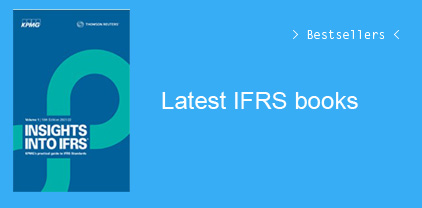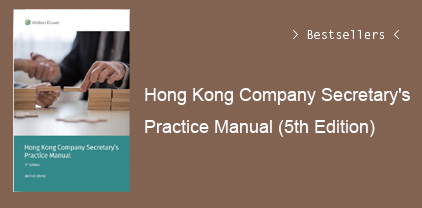Preface xiii
Acknowledgements xv
About the Author xvii
PART ONE Working in Product Control
CHAPTER 1 An Introduction to Product Control 3
The Emergence of Product Control 3
The Purpose of Product Control 3
Different Types of Product Control 5
Skills, Qualifications and Experience 6
Organizational Structure 8
The Desk 10
CHAPTER 2 Changing Landscape of Product Control 15
Offshoring 15
XVA 19
Greater Levels of Capital 19
Greater Focus on Liquidity 20
Notes 21
CHAPTER 3 Key Stakeholders 23
Front Office: Sales and Trading Desk 23
Chief Operating Officers (COOs) 25
Operations 26
Middle Office 27
Market Risk 28
Financial Reporting 29
Management Reporting 29
Finance Change 30
IT 30
Operational Risk 32
Regulatory Reporting 32
Accounting Policy 34
Tax 34
Audit 36
Finance Shared Service 37
Summary 37
Notes 37
PART TWO Technical Skills
CHAPTER 4 Accounting Standards: Recognition and Measurement 41
IAS 39 Financial Instruments: Recognition and Measurement 42
IFRS 9: Financial Instruments 60
IFRS 13: Fair Value Measurement 66
Notes 71
CHAPTER 5 Market Risk 75
What Is Market Risk and How Is It Generated? 75
How Is Market Risk Measured by a Bank? 77
Note 85
CHAPTER 6 Pricing Financial Instruments 87
How to Approach the Pricing of a Financial Instrument 87
Pricing Examples 89
Notes 105
CHAPTER 7 Internal Control 107
What Is Internal Control? 107
Establishing an Internal Control Framework 110
Example of Front to Back Internal Controls 117
Notes 122
PART THREE Profit and Loss Controls
CHAPTER 8 System Feeds, End of Day Rates and Profit and Loss Estimates 127
System Feeds 127
End of Day 129
End of Day Rates 130
P&L Estimate 135
Note 136
CHAPTER 9 Review of New and Amended Trades 137
New Trades 137
Amended Trades 152
Notes 164
CHAPTER 10 Review of Mark-to-Market P&L 165
Defining Mark-to-Market P&L 165
Attributing MTM P&L 166
Risk-Based P&L Estimates 170
Changes in the End of Day Prices 173
When to Validate the MTM P&L 176
CHAPTER 11 Funding, Fees and Charges 177
Funding 177
Fees and Charges 185
Note 187
CHAPTER 12 Profit and Loss Adjustments 189
The Need for P&L Adjustments 189
Controlling P&L Adjustments 190
Notes 194
CHAPTER 13 Profit and Loss Commentary 195
Who Is the Reader? 198
When Is P&L Commentary Required? 198
CHAPTER 14 Profit and Loss Reconciliations and Sign-Offs 201
Flash vs. Actual 201
Desk P&L Sign-off 203
P&L Reconciliation 205
PART FOUR
Valuations
CHAPTER 15 Independent Price Verification 209
Components to IPV Process 210
Note 224
CHAPTER 16 Valuation Adjustments 225
Why Valuation Adjustments Are Required 225
Bid–Offer 225
Day 1 Reserves 234
Model Valuation Adjustment 234
XVA and Collateral Agreements 235
Recording and Reporting of VAs 239
Notes 239
PART FIVE Balance Sheet Controls
CHAPTER 17 Balance Sheet Substantiation and Analysis 243
Substantiating the Balance Sheet 243
Frequency of the Balance Sheet Substantiation 248
Evidencing the Balance Sheet Substantiation 249
Unsupported Balances 249
Lines of Responsibility 255
CHAPTER 18 Dividending of Profit and Loss and FX Selldown 257
CHAPTER 19 Controlling Nostros 261
Introduction to Nostros 261
Controlling Nostros – Cash Breaks 262
Risk-Weighting Cash and AVE breaks 266
Provisioning for Nostro and AVE Breaks 267
Notes 268
PART SIX Financial Accounting and Reporting
CHAPTER 20 Financial Accounting Entries 271
Financial Accounting Entries 271
Chart of Accounts 284
Accounting Rules Engine 286
Notes 289
CHAPTER 21 Financial Reporting and Note Disclosures 291
Context of Financial Reporting 291
Profit and Loss 293
Balance Sheet 295
Netting 297
Fair Value Hierarchy 304
Notes 309
PART SEVEN Supplementary Controls
CHAPTER 22 New Product Proposals 313
Starting Line 313
The Review 314
The Sign-Off 319
CHAPTER 23 Rogue Trading 321
The Forefathers of Rogue Trading 321
The Fallout from Rogue Trading – The Bank 323
The Fallout from Rogue Trading – The Industry 325
Going Rogue 325
UBS Rogue Trading Incident, 2011 327
Notes 343
Index 347

































